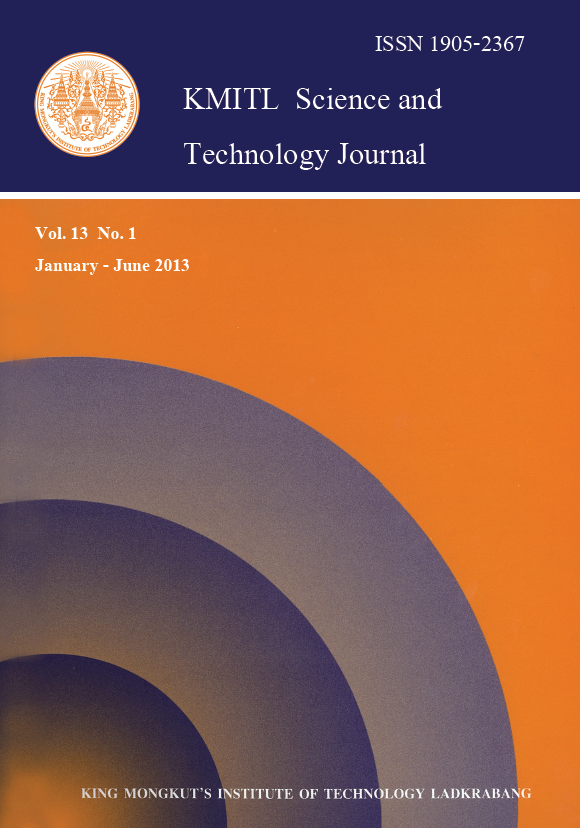Investigating the Effectiveness of BU WebEx System
Main Article Content
Abstract
Nowadays, distant-learning systems provide a wide range of learning techniques with flexibility that provide students with increased opportunities, convenience, and personalization. In the 21st century, students can choose their own studying style whether learning at home or the university. Students can learn at home without the physical presence of a teacher. Recently, Thailand has experienced the worst flooding in over 50 years. At that time, some students and teachers had difficulty in commuting. For that reason, Bangkok University adopted a “BU WebEx” system which designed for helping teachers and students for distant learning. So far, there is little research have been conducted on the effectiveness of distant learning. In this study, we analyzed and described how students and teachers participated in the BU WebEx system. We examined the students' participation rates, the network connection, and the amount of spending time. The data consist of log files of the BU WebEx system and user's feedbacks after using the system.
Keywords: WebEx System, Distance Learning, Virtual Classroom, Effectiveness Evaluation.
Email: worawat.c@bu.ac.th
Article Details
Copyright Transfer Statement
The copyright of this article is transferred to Current Applied Science and Technology journal with effect if and when the article is accepted for publication. The copyright transfer covers the exclusive right to reproduce and distribute the article, including reprints, translations, photographic reproductions, electronic form (offline, online) or any other reproductions of similar nature.
The author warrants that this contribution is original and that he/she has full power to make this grant. The author signs for and accepts responsibility for releasing this material on behalf of any and all co-authors.
Here is the link for download: Copyright transfer form.pdf
References
National Conference on Technical Education,2012. [5] Mohammad, S., Job, M.A. Evaluation of infrastructure for e-learning system in aoubahrain branch. International Journal of Information, 2(4), 2012, 381-389. [6] Wang, Y.S. Assessment of learner satisfaction
with asynchronous electronic learning systems. Information & Management, 41(1), 2003, 75–86. [7] Hrastinski, S. Asynchronous and synchronous elearning. Educause quarterly, 31(4), 2008, :51–55. [8] Ong, C.S., Lai, J.Y., Wang, Y.S. Factors affecting engineers’ acceptance of asynchronous elearning systems in high-tech companies. Information & management, 41(6), 2004, 795–804. [9] Klesath, M., Annetta, L.A., Folta, E. The role of synchronous interactions within higher education distance education courses, Springer Netherlands,2010, 71-82. [10] Annetta, L.A. Folta, E., Klesath, M. V-learning:Distance education in the 21st century through 3D virtual learning environments. Springer, 2010. [11] Kauff, P., Schreer, O. An immersive 3d video conferencing system using shared virtual team user environments. In Proceedings of the 4th international conference on Collaborative virtual environments, ACM, 2002, 105–112. [12] Boulos, M.N.K., Hetherington, L., Wheeler, S.Second life: an overview of the potential of 3-d virtual worlds in medical and health education.Health Information & Libraries Journal, 24(4),2007, 233–245. [13] E. Reuters. Second life tops 50,000 concurrency,2008. [14] Edwards, C. Another world. Engineering &Technology, 1(9), 2006, 28–32. [15] R. Freedman. How to make real money in second life. New York, 2008.[16] Kumar, S., Chhugani, J., Kim, C., Kim, D.,Nguyen, A., Dubey, P., Bienia, C., Kim, Y.Second life and the new generation of virtual worlds. Computer, 41(9), 2008, 46–53. [17] Macedonia, M. Generation 3D: Living in virtualworlds. Computer, 40(10), 2007, 99–101.[18] Reisinger, J., Kappel, J., Cresp, J. Mashing the real world with virtual worlds a monetizing opportunity. In Innovations in NGN: Future Network and Services, 2008. K-INGN 2008. First
ITU-T Kaleidoscope Academic Conference,IEEE, 2008, 111–116. [19] Sookhanaphibarn, K., Thawonmas, R. A framework for design and evaluation of digital museums in second life as learning institutions. In Intelligent Information Hiding and Multimedia Signal Processing, IIH-MSP’09. Fifth International Conference on. IEEE, 2009, 1130–1133. [20] Cisco publish information. Pervasive video extends university’s high-touch culture, 2011. [21] Garrison, D.R., Vaughan, N.D. Blended learning in higher edu-cation. Framework, principles, and guidelines. San Francisco, John Wiley&Sons,2008. [22] Osguthorpe, R.T., Graham, C.R. Blended learning environments: Definitions and directions. Quarterly Review of Distance Education, 4(3), 2003, 227–33.


